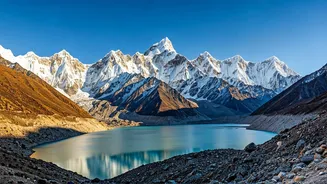In a bold step to redefine India’s place on the world tourism map, the Government of India has unveiled an ambitious plan to develop 50 new destinations of global standards by 2029. The vision is simple
yet sweeping — to create world-class experiences that reflect India’s rich heritage, diverse landscapes, and modern aspirations. From the snow-capped valleys of Kashmir to the serene backwaters of Kerala, and from the vibrant coasts of Gujarat to the lush hills of Assam, the initiative seeks to showcase India’s unparalleled cultural and natural wealth through destinations that meet international benchmarks. Each state and union territory has been asked to submit proposals within the next month, identifying potential sites that can be developed under the scheme. Once approved, states will have three to four years to complete the transformation. A uniform development framework, designed by the Centre, will guide these projects to ensure global standards of infrastructure, sustainability, and visitor engagement. Right after Operation Sindoor, Prime Minister Narendra Modi called upon Indians to become self-reliant — not just in strategic sectors but also in promoting India’s own culture and tourism. It was during this period that the Indian tourism industry collectively decided to boycott countries like Turkey for siding with Pakistan on key global platforms. This moment marked a shift in mindset. People working on the ground have repeatedly conveyed to the government that India’s tourism potential is immense, and what’s needed is a clear strategy to channelise this strength in the right direction. The new plan, officials say, is precisely that — a framework to turn India’s inherent cultural and natural advantages into globally competitive destinations. Every state and union territory is expected to have at least one flagship destination under the project, ensuring equitable representation and regional balance. Once complete, these sites are expected to draw global attention, drive employment, and give a significant push to local economies. Much like the Swadeshi movement that redefined India’s economic identity a century ago, this initiative seeks to reimagine India’s tourism potential — rooted in local character, yet resonating with global excellence. If all goes as planned, by 2029, travellers around the world could find 50 new reasons to explore India — each destination a reflection of the nation’s evolving identity: traditional at heart, and global in vision.












